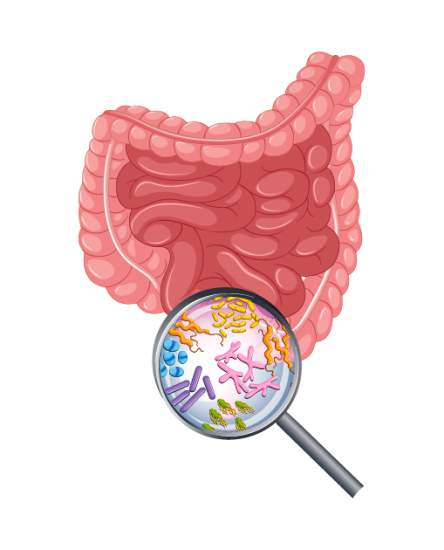H1 Tag: As Title
Introduction: As Meta Description
Form
Precision Oncology & Holistic Approach to Peritoneum Cancer Treatment at Art of Healing Cancer
At Art of Healing Cancer, the fusion of Precision Oncology, modern medicine, and traditional healing practices forms the cornerstone of our patient-centered treatment philosophy. Recognizing the uniqueness of each individual’s battle with cancer, we integrate cutting-edge genomic sequencing and the latest medical advancements to tailor treatment plans that are as unique as the patients themselves. Simultaneously, we embrace the wisdom of traditional medicine, acknowledging its role in nurturing the whole person – body, mind, and spirit. This holistic approach not only targets the cancer cells but also supports the overall well-being of our patients, helping them to maintain a better quality of life throughout their treatment journey. By blending these diverse modalities, Art of Healing Cancer offers a compassionate, comprehensive care plan that addresses the multifaceted challenges of cancer, ensuring that each patient receives the most effective, personalized therapy.
Peritoneum cancer Treatment in ____________________________
Please share your contact details for our teams to connect and guide you through your treatment plans
Form
Our Expert Cancer Care Team
At Art of Healing Cancer, we pride ourselves on having a team of highly skilled and compassionate experts in cancer treatment. Our specialists, drawn from diverse fields of oncology, integrate the latest advancements in modern medicine with traditional healing practices. This unique blend ensures that each patient receives a holistic treatment plan, tailored to their specific needs. Our team includes renowned oncologists, experienced surgeons, dedicated nurses, and supportive care professionals who work together to provide comprehensive care. To meet our esteemed team and learn more about their expertise and contributions in the field of cancer treatment, please visit our dedicated page here.
 DR. MANDEEP SINGH MALHOTRA
DR. MANDEEP SINGH MALHOTRA
- Dr. Mandeep Singh Malhotra is the Chief Mentor at Art of Healing Cancer, with over 20 years of clinical oncology experience.
- He trained in surgical oncology at All India Institute of Medical Sciences, Delhi, and gained international experience in the UK, USA, and Singapore.
- Expert in Salvage Surgery for various recurrent cancers and integrates Precision Oncology with traditional medicine.
Accreditation
Why Choose Art of Healing Cancer

Blending traditional and modern treatments, we offer a holistic approach to cancer care.
Through chemosensitivity planning, we customize chemotherapy to each patient’s unique needs.
Precision and improved outcomes are hallmarks of our state-of-the-art robotic surgery techniques.
Utilizing genomic and transcriptomic data analysis, we provide the most advanced targeted therapy options.
As the only institution in India combining genomic and transcriptomic data with natural and herbal treatments, we offer comprehensive care.
We offer the most advanced immunotherapy treatments, including tailored vaccines and sensitivity testing to immunotherapy drugs.
One of the only centres trained on exploiting tumor Metabolism
We can grow cancer cells from blood in 3D tumors to analyse the cancer characteristics
Publications
International journal of Complementary and Internal Medicine
Impact of Slow- Infusion (Metronomic) 2-Deoxy-D-Glucose in Treatment of Refractory Patient of Gliobalstoma Multiforme
Cost of Peritoneum Cancer Treatment
The cost of treating cancer, including peritoneal cancer can vary widely based on the type of treatment, the severity and stage of the cancer, and other individual factors. Here’s a breakdown of the costs associated with various cancer treatments:
The cost for surgery can range from ₹305,200 ($3791) to ₹11,44,500 ($14216), depending on the specific requirements of the surgery.
- Robotic Surgery: On average, the cost of robotic surgery in Delhi is around ₹5,72,250 ($7108).
- A complete course ranges from INR 1,00,000 to INR 2,50,000, based on session type and number.
- Costs per cycle range from INR 20,000 to INR 2,00,000, with total varying by drugs used and cycle number.
- Monthly costs can be INR 50,000 to over INR 1,00,000, depending on medications.
- Often exceeds INR 1,00,000 per dose, potentially spanning several doses.
- Includes side effect management, physical therapy, counseling, alternative therapies, adding significantly to total cost.
- Regular appointments, tests, and monitoring for recurrence are ongoing costs.

Factors Influencing Treatment Costs
Stage of Cancer
Treatment Plan
Personalized Treatment Approaches
Peritoneum Cancer – Introduction & Treatment Methodology
Peritoneal cancer is a rare but serious type of cancer that occurs in the peritoneum, a thin layer of tissue lining the inside of the abdomen. This lining provides a protective cover for the abdominal organs and serves as a lubricated surface allowing organ movement.

A rare cancer starting in the peritoneum, similar to epithelial ovarian cancer but can occur without ovaries. It arises from the peritoneum’s cells, distinct from ovarian involvement.
Also known as peritoneal carcinomatosis, it results from the spread of other cancers (like stomach, colon) to the peritoneum, with treatment depending on the primary cancer’s origin.
A rare, aggressive cancer linked to asbestos exposure, affecting the abdominal lining and presenting with symptoms like pain and swelling.
An aggressive, rare cancer affecting mainly young males, characterized by small, round cells, often widespread at diagnosis, posing treatment challenges.
Testing and Screening for Peritoneum Cancer
- CT Scan: Offers detailed images of the abdomen to spot tumors or abnormalities.
- MRI: Provides enhanced soft tissue images, useful for assessing peritoneal cancer spread.
- Ultrasound: Uses sound waves to detect fluid or masses in the abdomen.
Tests like the CA-125 can indicate peritoneal cancer by measuring specific protein levels, though results may vary with other conditions.
The conclusive method for diagnosing peritoneal cancer, involving tissue sample examination.
- Percutaneous biopsy: Needle insertion through the skin, often using imaging for guidance.
- Laparoscopy: A minimally invasive procedure using a camera and tools through small incisions to view and sample the peritoneum.

Causes and Risk Factors of Peritoneum Cancer

Risk is higher in those with a family history of peritoneal, ovarian, or breast cancer, often due to BRCA1 and BRCA2 gene mutations.
More common in women and individuals over 60, suggesting accumulated risk factors over time.
This condition can increase risk by causing inflammation and cellular changes in the peritoneum.
Past surgeries or chronic abdominal inflammation may heighten risk by altering peritoneal cells.
Linked to peritoneal mesothelioma, asbestos fibers can cause long-term inflammation and cancer in the peritoneum.
Obesity and smoking might indirectly increase risk through inflammation and bodily changes.
Symptoms of Peritoneum Cancer
Persistent or intermittent abdominal pain that may be vague and not localized to any specific area. It’s essential to pay attention to ongoing discomfort, even if it’s mild.
Noticeable increase in abdominal size or persistent bloating unrelated to meal intake, often caused by fluid accumulation (ascites) in the abdominal cavity, commonly associated with peritoneal cancer.
Peritoneal cancer can cause noticeable alterations in bowel movements, including constipation or diarrhea. These changes are often variable and should be monitored if they persist.
These symptoms may manifest, particularly if the cancer affects the stomach or significant fluid buildup occurs in the abdomen, potentially impacting digestive processes.
This early satiety, or feeling full after consuming only a small meal, can lead to a reduced appetite and subsequent weight loss, which is a concerning symptom.
Any significant weight loss that occurs without changes in diet or exercise routines can be a red flag for peritoneal cancer, especially when coupled with other symptoms on this list.
A deep, unrelenting tiredness that doesn’t improve with rest, limiting the ability to perform daily activities, can be indicative of peritoneal cancer among other conditions.

Stages of Peritoneum Cancer

- Stage IA: Cancer is found only on the surface of the peritoneum.
- Stage IB: Cancer is present on the peritoneum’s surface and may also involve the organs within the pelvis.
In stage I, the cancer has not spread beyond the peritoneum or the pelvis. Treatment at this early stage often involves surgery and may have a more favorable outcome.
- Stage IIA: Cancer has spread to some organs in the abdomen, such as the liver or spleen surface.
- Stage IIB: The spread includes more extensive involvement of organs within the abdomen.
At stage II, the cancer has begun to spread beyond the pelvis but is still within the abdominal cavity. Treatment may involve more extensive surgery combined with chemotherapy.
- Stage IIIA: Cancer has spread to nearby lymph nodes and more organs within the abdomen.
- Stage IIIB: The spread is more extensive, with larger tumors present in multiple abdominal organs.
Stage III indicates more significant spreading, which may involve lymph nodes and a wider area of the abdominal cavity. Treatment often involves a combination of surgery to remove as much cancer as possible and chemotherapy to target cancer cells.
Stage IV peritoneal cancer has spread beyond the abdomen to distant parts of the body, such as the lungs or bones. This stage signifies advanced disease and may require a more aggressive treatment approach, including chemotherapy, targeted therapy, and palliative care to manage symptoms and improve quality of life.
Integrative Cancer Treatments at Art of Healing Cancer
Administering high-dose Vitamin C intravenously, this therapy is explored for its potential to produce hydrogen peroxide, which may target cancer cells, enhance life quality, and mitigate side effects of traditional treatments.
An innovative therapy where patients inhale molecular hydrogen gas, leveraging its antioxidant properties to potentially reduce oxidative stress in cancer cells. Its efficacy and safety in humans are subjects of ongoing research.
Involves breathing pure oxygen in a pressurized environment, believed to enhance tissue oxygenation and aid healing. Used cautiously in cancer care to potentially improve chemotherapy and radiation effectiveness and manage side effects.
Utilizes extracts from the European mistletoe plant, injected to possibly stimulate the immune system and exert cytotoxic effects on cancer cells. While popular in Europe for quality of life improvement, its scientific validation remains mixed.
An ancient Indian practice focusing on body system balance through diet, herbal treatment, and yogic breathing. Aimed at detoxification, boosting defense mechanisms, and overall well-being, it complements conventional treatments despite limited clinical trial evidence.

Treatment Options for Peritoneum Cancer

- Debulking Surgery: A primary surgical method for advanced peritoneal cancer aiming to remove as much tumor as possible, including affected tissues and organs, striving for no visible disease remaining.
- Peritonectomy: Removal of parts of the peritoneal lining affected by cancer spread, targeting various abdominal and pelvic areas.
- HIPEC: Post-surgery, the abdominal cavity is treated with heated chemotherapy to target residual cancer cells, minimizing systemic side effects.
Uses cytotoxic drugs to target rapidly dividing cancer cells, administered intravenously, orally, or by injection. Types include Anthracyclines, Taxanes, Alkylating Agents, and Antimetabolites. Can be neoadjuvant (before surgery), adjuvant (after surgery), or palliative.
Focuses on specific genes or proteins involved in cancer growth.
- Monoclonal Antibodies: Bind to cancer cell molecules, blocking growth or aiding immune response.
- Tyrosine Kinase Inhibitors: Block enzymes promoting cancer cell growth.
- Proteasome Inhibitors: Hinder protein breakdown needed for cancer cell survival.
- Histone Deacetylase Inhibitors: Affect gene expression regulation in cancer cells.
Enhances the body’s immune response against cancer.
- Checkpoint Inhibitors: Unblock immune cells to attack cancer.
- Monoclonal Antibodies: Target specific cancer cells.
- Cancer Vaccines: Train the immune system to recognize cancer cells.
- Adoptive Cell Therapy: Modifies patient’s immune cells to better fight cancer.
- Oncolytic Virus Therapy: Uses viruses to target and destroy cancer cells.
Uses high-energy beams to kill or halt cancer cell growth.
- External Beam Radiation Therapy (EBRT): Directs radiation from outside the body.
- Internal Radiation Therapy (Brachytherapy): Places radioactive material near cancer cells.
- Systemic Radiation Therapy: Uses radioactive substances in the blood.
- Proton Therapy: Utilizes protons for precise targeting.
Customizes treatment based on genetic profiling of cancer.
- Genomic Sequencing (NGS): Identifies specific mutations for targeted therapies.
- Chemosensitivity: Tests cancer cell response to chemotherapy drugs.
- RNA Sequencing: Analyzes gene expression for targeted interventions.
- Tissue Banking: Stores samples for future research.
- Circulating Tumor Cell (CTC): Monitors disease progression through blood analysis.
- Metabolic Therapy: Targets cancer cell metabolism through dietary changes.
Complementary approaches focusing on well-being and symptom management.
- Diet and Nutrition: Emphasizes whole foods and anti-inflammatory items.
- Herbal Supplements: Includes evidence-based herbs for cancer care or symptom relief.
- Mind-Body Therapies: Practices like meditation, yoga, and tai chi for stress reduction.
- IV Vitamin C: High-dose therapy with potential benefits but not widely accepted.
- Hydrogen Inhalation Therapy: Emerging approach with antioxidant properties.
- Hyperbaric Oxygen Therapy (HBOT): Enhances chemotherapy and radiation efficacy, with cautious use.
- Mistletoe Therapy: Used for immune stimulation and quality of life improvement.
- Ayurvedic Medicine: Focuses on holistic care, often alongside conventional treatments.
Each treatment option is chosen based on individual patient factors, cancer stage, and overall health, offering a comprehensive approach to peritoneum cancer management.
